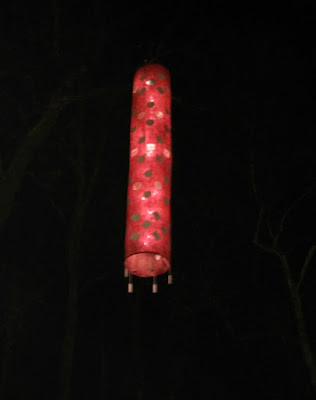V zadnjih letih se je končno tudi v slovenske osnovne šole uvedlo poučevanje prvega tujega jezika v prvo triado. Po noveli zakona o osnovni šoli se je postopno uvajalo prvi tuji jezik (angleščina ali nemščina) v 2. razred osnovnih šol tako, da se je ta v šolskem letu 2014/2015 uvedel za učence 2. razreda na največ 15 odstotkih šol od skupnega števila osnovnih šol, v šolskem letu 2015/2016 pa še največ 30 odstotkov šol od skupnega števila osnovnih šol. V šolskem letu 2016/2017 se je začel izvajati prvi tuji jezik kot obvezen predmet za vse učence, ki so vpisani v 2. razred. Prvi tuji jezik (prav tako angleščina ali nemščina) pa se je kot neobvezni izbirni predmet v šolskem letu 2015/2016 začel izvajati že v 1. razredu.1 K neobveznemu izbirnemu predmetu se je v šolskem letu 2015/16 vpisalo 86,1% prvošolcev. Večinoma so se učili angleščino, slabe 3% pa nemščino.2
Toliko o dosedanjih statistikah. Ker so me zanimali ažurnejši in obširnejši podatki, sem s pomočjo spletne strani www.1ka.si izvedla anketo med učitelji angleščine v prvi triadi. Rezultati ankete so zgolj informativne narave in lahko odstopajo od dejanskega stanja, saj je v anketi sodelovalo le 96 učiteljev in pri naboru anketirancev ne gre za reprezentativen vzorec (večina anketirancev je do spletne ankete dostopalo preko Facebook strani Angleščina v 1. triletju – učitelji). Kljub temu menim, da so rezultati zanimivi za boljšo predstavo, poleg tega pa ugotavljam, da moji dobljeni rezultati za letošnje šolsko leto ne odstopajo bistveno od razpoložljivih uradnih podatkov za lansko šolsko leto.
Najprej si oglejmo nekatere demografske podatke: med učitelji angleščine v prvi triadi močno prevladujejo ženske v starosti 20 – 40 let. Večina je po primarni izobrazbi profesor razrednega pouka z opravljenim modulom za poučevanje angleščine. Med profesorji angleškega jezika ima modul za zgodnje poučevanje opravljenih približno pol. Pri statistikah dodatnega usposabljanja sem upoštevala le javno veljavne študijske programe za usposabljanje iz zgodnjega poučevanja, ali dodatne ali v sklopu bolonjskega študija.
Glavni dejavnik pri odločanju za usposabljanje za zgodnje poučevanje pri anketirancih so bile boljše zaposlitvene možnosti in ne lasten interes, za kar osebno menim, da je zaskrbljujoče, saj lahko vpliva na kakovost rezultata usposabljanja in posledično poučevanja. Razlog za odločitve na podlagi zaposlitvenih možnosti je verjetno tudi plačilo usposabljanja: cene študijskih programov za usposabljanje so štirimestne, plačniki pa v večini primerov (vsaj delno) udeleženci sami.
*Tu gre za študente bolonjskih programov, ki so modul opravili v sklopu študija, v nekaj primerih pa je bilo kot plačnik navedeno ministrstvo,
Polovica anketiranih učiteljev se je s poučevanjem angleščine na starostni stopnji prve triade srečevalo že pred uvedbo prvega tujega jezika v prvo triado: največ preko interesne dejavnosti, nekaj pa tudi preko poučevanja na jezikovnih šolah, projektov na OŠ, projektov fakultete v času študija, nadomeščanj itd. (pri vprašanju je bilo možno izbrati več odgovorov).
*Nadomeščanje, Erazmus izmenjava, jezikovni poletni tabori preko fakultete
Velika večina anketiranih učiteljev oz. njihovih učencev v prvi triadi ne uporablja nobenega učbeniškega kompleta, kar se sklada tudi z dejstvom, da za pouk angleščine v prvi triadi trenutno ni potrjen noben učbenik. Kljub temu, da za delovne zvezke potrjevanje ni potrebno, pa se večina učiteljev na tej starostni stopnji ne odloča niti za poučevanje s pomočjo delovnega zvezka. Glede na to, da učni načrt za angleščino v prvi triadi daje poudarek na slušno razumevanje in govorjenje ter da je predvideno interaktivno poučevanje preko iger, zgodb in drugih aktivnosti, se rezultat sklada s pričakovanji.


Večina učiteljev pri poučevanju skladno s priporočili učnega načrta vsaj delno izvaja CLIL tehniko poučevanja, z opismenjevanjem pa začnejo v drugem ali najpogosteje tretjem razredu.
V neobvezni izbirni predmet angleščina v prvem razredu je vpisana velika večina učencev - na večini šol, na katerih poučujejo anketiranci, kar vsi. Angleščina kljub temu večinoma poteka pred ali po rednem pouku, pri izbiri termina pa prednjači 5. šolska ura.
Anketa je vsebovala tudi vprašanje o tem, kakšno mnenje imajo anketiranci o zgodnjem poučevanju angleščine. Žal je bilo prejetih premalo odgovorov na to vprašanje, da bi lahko izluščila merodajne zaključke.
Večina rezultatov ankete se sklada z mojimi pričakovanji. Najbolj me je presenetilo razmerje med učitelji razrednega pouka in učitelji angleščine, saj sem med izvajalci pričakovala precej višji odstotek učiteljev angleščine od dobljenega. Vseeno rezultate do neke mere pripisujem tudi nereprezentativnosti anketiranega vzorca, saj se je pobuda za Facebook skupino Angleščina v 1. triletju - učitelji začela med razrednimi učitelji in je njihova zastopanost v skupini še vedno močnejša. Tudi delež učiteljev, ki pri pouku angleščine v prvi triadi ne uporabljajo učbenika, je ne glede na učni načrt nekoliko višji od pričakovanega, saj je pritisk založb na tem področju občuten. Spodbuden pa je delež vpisanih učencev na neobvezni izbirni predmet angleščina v prvem razredu. Menim celo, da je dovolj visok, da se status izbirnega predmeta odpravi in se angleščino uvede kot obvezni predmet v prvi razred, saj status neobveznega izbirnega predmeta neredko povzroča precej zmede in nepotrebnih komplikacij pri sestavljanju urnika. Pouk angleščine bi bil po mojem mnenju bistveno bolj kakovosten, če ne bi bil obsojen na pete in šeste ure, ko je zmogljivost otrok že precej nižja od maksimalne. Iskreno upam, da se bodo na tem področju naredile tudi uradne raziskave in da se bo status prvega tujega jezika v prvi triadi uredil optimalno za učence.
Viri:
1 "Pravilnik o postopnem uvajanju prvega tujega jezika v 2. razred osnovne šole." Citirano 23. 10. 2016. http://pisrs.si/Pis.web/pregledPredpisa?id=PRAV11951.
2 Žist, Franja. "Po 19 Letih Spet Bum Prvošolčkov." Citirano 23. 10. 2016. http://www.vecer.com/po-19-letih-spet-bum-prvosolckov-6252420.


















































